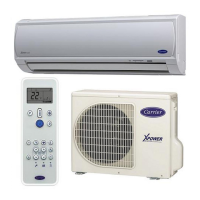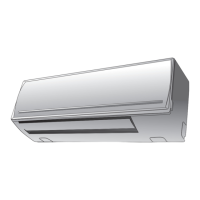Do you have a question about the Carrier 42NQV050M and is the answer not in the manual?
Precautions for handling R410A refrigerant during installation and servicing to prevent hazards.
Detailed diagram of the refrigerant cycle for specific model series.
Diagrams showing the correct placement and mounting of indoor and outdoor units.
Guidelines for selecting an appropriate location for the outdoor unit.
Procedure for checking refrigerant gas leaks using a detector or soapy water.
How to perform the initial system test after installation.
Checking if the power breaker is operating correctly.
Troubleshooting steps when the indoor unit or remote controller is not operating.
Troubleshooting steps when the outdoor unit fails to operate.
Diagnosing why the outdoor unit stops shortly after starting operation.
Precautions for handling R410A refrigerant during installation and servicing to prevent hazards.
Detailed diagram of the refrigerant cycle for specific model series.
Diagrams showing the correct placement and mounting of indoor and outdoor units.
Guidelines for selecting an appropriate location for the outdoor unit.
Procedure for checking refrigerant gas leaks using a detector or soapy water.
How to perform the initial system test after installation.
Checking if the power breaker is operating correctly.
Troubleshooting steps when the indoor unit or remote controller is not operating.
Troubleshooting steps when the outdoor unit fails to operate.
Diagnosing why the outdoor unit stops shortly after starting operation.
| Model | 42NQV050M |
|---|---|
| Cooling Capacity (kW) | 5.0 |
| Refrigerant | R410A |
| Voltage (V) | 220-240 |
| Power Supply | 50Hz |











